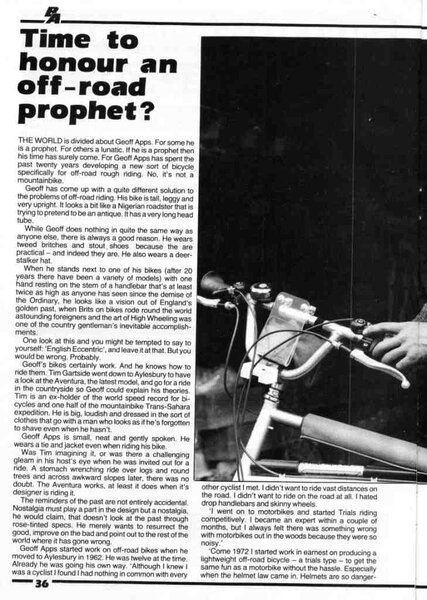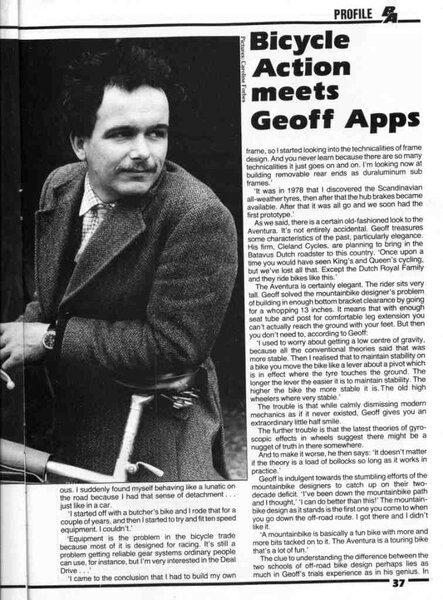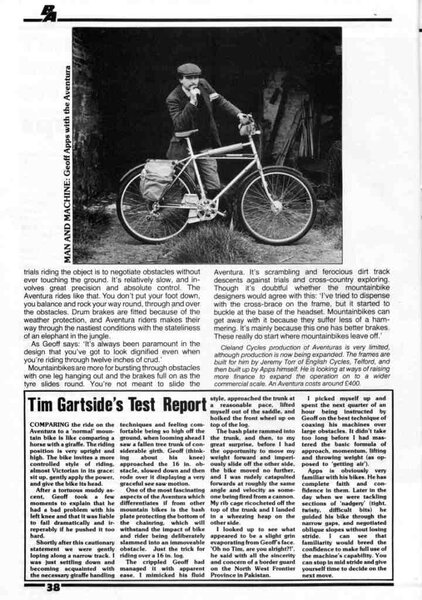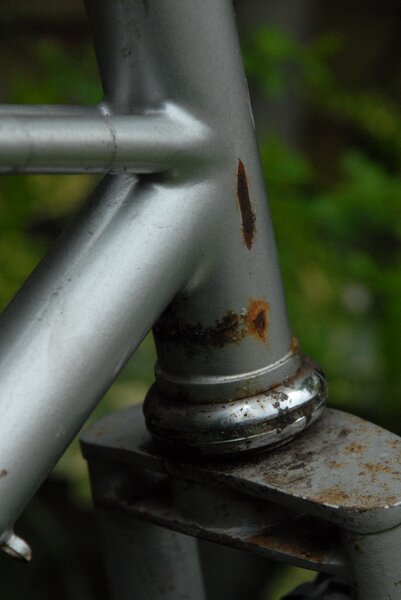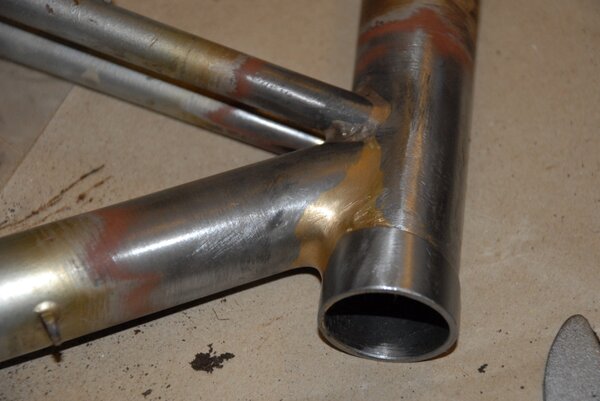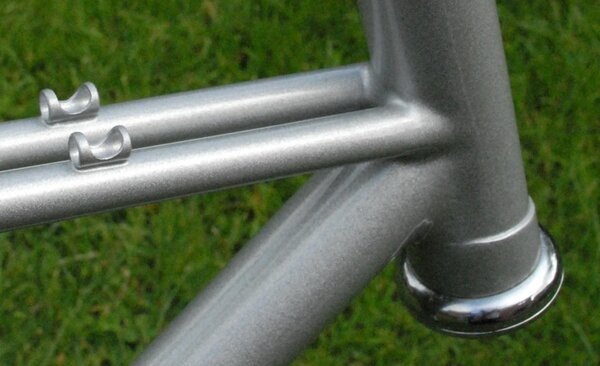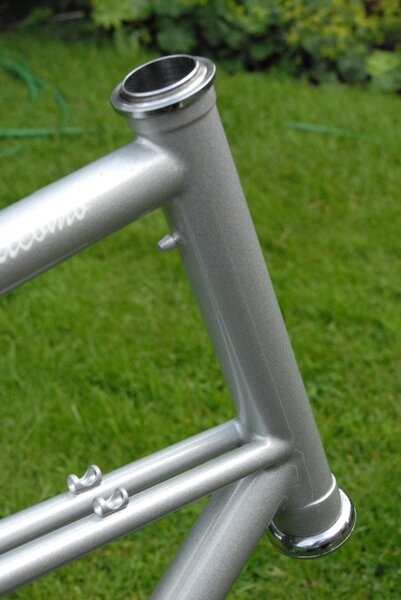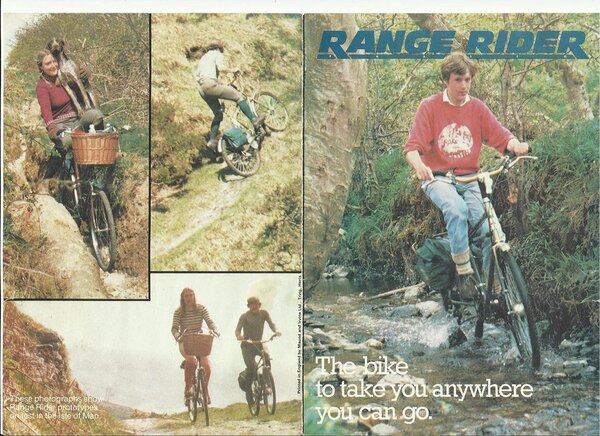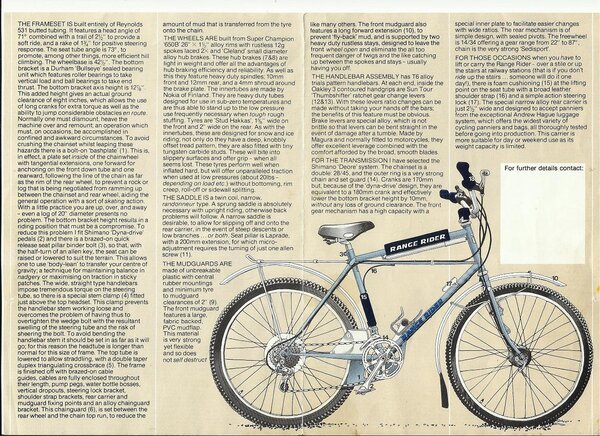- Feedback
- View
Re:
A bit of Pre-Restoration History
There are a few unsung heroes of British mountain biking who have been virtually forgotten because their contribution came long before mountain biking took off in the UK. The earliest and most influential promoter of mountain biking in Britain was London Evening Standard Journalist Richard Grant.
Richard's story starts in 1977 when he accidentally ran into a couple of cycling hippies in California whilst investigating other news stories. Even though he wasn't a keen cyclist he went riding with them borrowing one of their homemade 'Clunker' bicycles. This he thought was the most fun you could have on a bicycle and he became convinced that this was the future of cycling.
He bought a 'Clunker' off its maker a man called Gary Fisher and brought it back to Britain. There he showed the bike at several cycle trade shows in an attempt to wake up the conservative cycle industry to this new type of bicycle.
In the mean time mountain biking took off in the US and by 1983 the first US 'Mountain Bikes' arrived in UK shops. Richard Grant responded by starting a new cycling magazine, but because a market for mountain biking had yet to develop he featured all aspects of cycling. Under his editorship 'Bicycle Action' became the first UK publication to regularly feature mountain biking with articles from Charlie Kelly in the US and in the second edition of July 1984, the story of the homegrown mountain bikes of Geoff Apps showing the 1981 700c wheeled Range Rider.
The photos show pretty much the same bike that we have today, proving that this bike has been frozen in time since at least 1984. Earlier photos tell a different story, that of a prototype that evolved in the process that was to decide the nature, componentry and wheel size of the bikes that Apps would eventually produce and sell to the public.
A bit of Pre-Restoration History
There are a few unsung heroes of British mountain biking who have been virtually forgotten because their contribution came long before mountain biking took off in the UK. The earliest and most influential promoter of mountain biking in Britain was London Evening Standard Journalist Richard Grant.
Richard's story starts in 1977 when he accidentally ran into a couple of cycling hippies in California whilst investigating other news stories. Even though he wasn't a keen cyclist he went riding with them borrowing one of their homemade 'Clunker' bicycles. This he thought was the most fun you could have on a bicycle and he became convinced that this was the future of cycling.
He bought a 'Clunker' off its maker a man called Gary Fisher and brought it back to Britain. There he showed the bike at several cycle trade shows in an attempt to wake up the conservative cycle industry to this new type of bicycle.
In the mean time mountain biking took off in the US and by 1983 the first US 'Mountain Bikes' arrived in UK shops. Richard Grant responded by starting a new cycling magazine, but because a market for mountain biking had yet to develop he featured all aspects of cycling. Under his editorship 'Bicycle Action' became the first UK publication to regularly feature mountain biking with articles from Charlie Kelly in the US and in the second edition of July 1984, the story of the homegrown mountain bikes of Geoff Apps showing the 1981 700c wheeled Range Rider.
The photos show pretty much the same bike that we have today, proving that this bike has been frozen in time since at least 1984. Earlier photos tell a different story, that of a prototype that evolved in the process that was to decide the nature, componentry and wheel size of the bikes that Apps would eventually produce and sell to the public.
